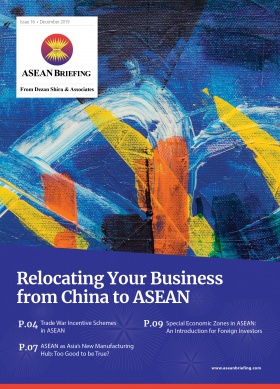An Asian Leopard Awakes: The Rise of Sri Lanka; Singapore’s New Business Companion
 Sri Lanka: An Asian Leopard Awakes
Sri Lanka: An Asian Leopard Awakes
- Colombo and Hambantota are flying under South-East Asia’s radar
- Sri Lanka will compete with Singapore back-office functions
- Is developing both tech-based manufacturing and services industries
Sri Lanka has been the source of numerous Western media articles describing it as a ‘victim’ of China’s Belt & Road Initiative, and especially debt trap issues over the countries South-Eastern Hambantota Port and Airport. As I have been saying – I maintain two houses and own a boutique hotel in the country and know of these matters – the real story is not how Western media have generally portrayed the issue. I debunked the Hambantota stories in the article China’s Belt & Road Is Being Blamed For Hambantota’s Port Problems, But The Real Story Is Rather Different and also described how Hambantota Port and Airport are being connected to the national rail network, a project that is well underway and should be completed in the next couple of years.
Hambantota has become a contentious issue among the BRI naysayers that the Atlantic Magazine commendably featured in their well-researched article The Chinese Debt Trap Myth: Narrative wrongfully portrays both Beijing and the developing countries it deals with.
Hambantota however is not the only game in town. Although Hambantota provides a far more convenient East Coast Airport and Deep-Water Port with immediate access for tourists to Sri Lanka’s legendary golden beaches, and Port facilities facing China, ASEAN, and Australia, the capital city, Colombo, is also getting a huge makeover. Facing West, just 30km from the South-East Indian coast and Ports such as Chennai, and over the Indian Ocean to the Middle East and Eastern Africa, Colombo Port City (CPC) is another Belt & Road Initiative project that the Chinese are undertaking with reclaimed land. I examined the potential for the CPC in the recent article Colombo Port City Turns Into Belt & Road Initiative Cash Cow For Investors.
Here are some images, taken yesterday (February 14) that best illustrate the developments taking place:
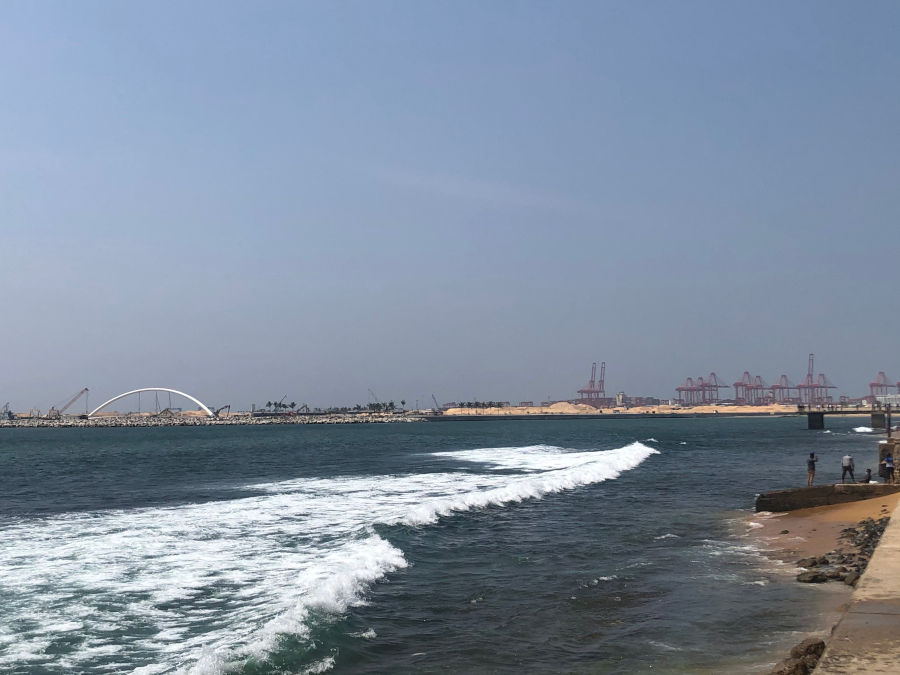 Looking over to Colombo Port City, with reclaiming land now starting to be vertically built. The square mile area will include a marina, park, promenade, residential and commercial real estate, and later a Special Economic Zone with a highway directly to the main Colombo airport just 25km away.
Looking over to Colombo Port City, with reclaiming land now starting to be vertically built. The square mile area will include a marina, park, promenade, residential and commercial real estate, and later a Special Economic Zone with a highway directly to the main Colombo airport just 25km away.
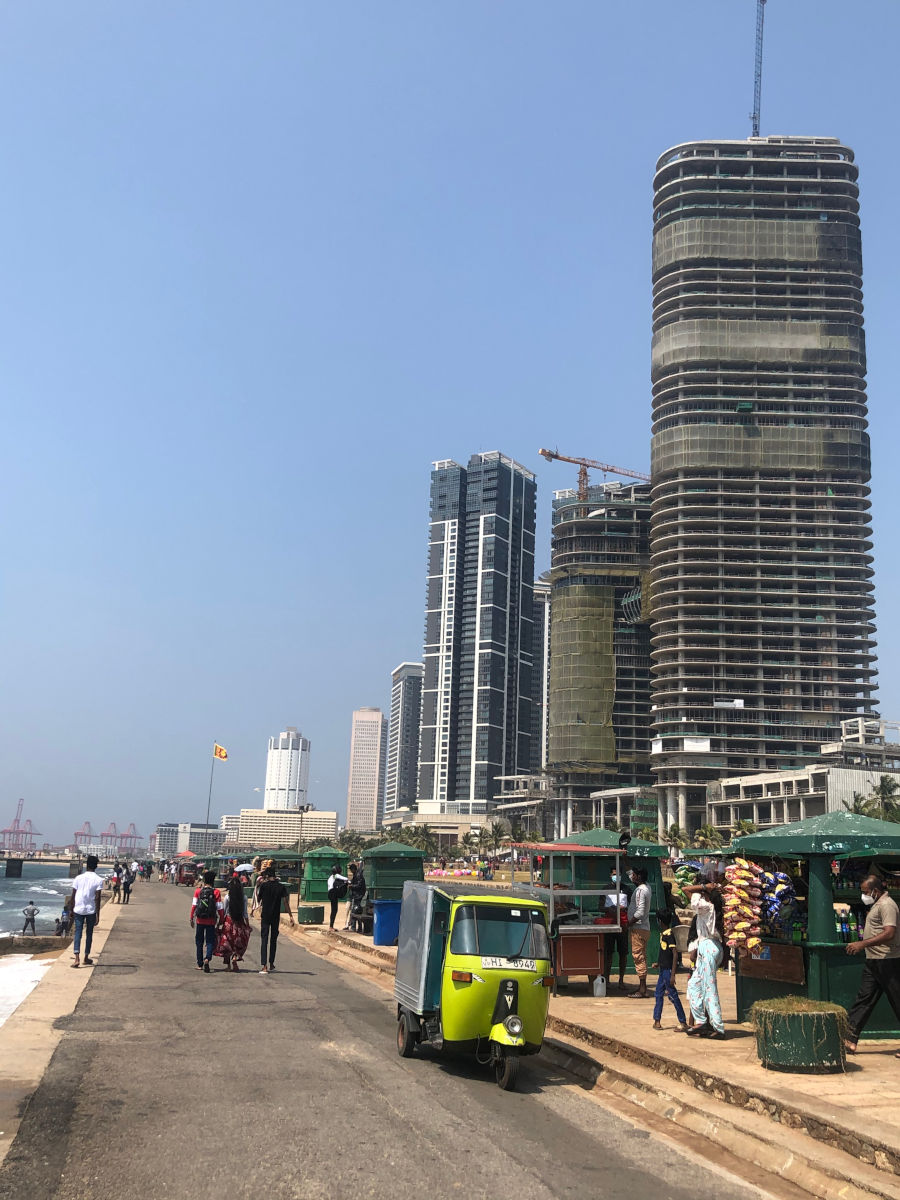 Various new build hi-rises directly overlooking the Indian Ocean with sunset views on the Colombo Fort Road towards the CPC.
Various new build hi-rises directly overlooking the Indian Ocean with sunset views on the Colombo Fort Road towards the CPC.
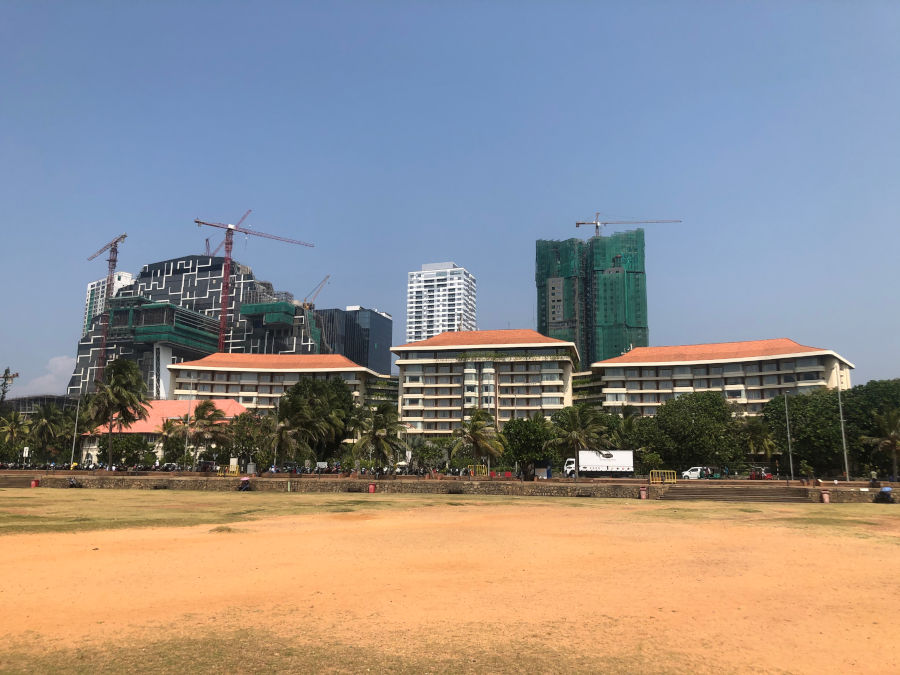 More contemporary hi-rise builds going up behind the beachfront Taj Samudra Hotel. The French designer Philippe Starck is also here and putting in interiors in new high-end restaurants and hotels
More contemporary hi-rise builds going up behind the beachfront Taj Samudra Hotel. The French designer Philippe Starck is also here and putting in interiors in new high-end restaurants and hotels
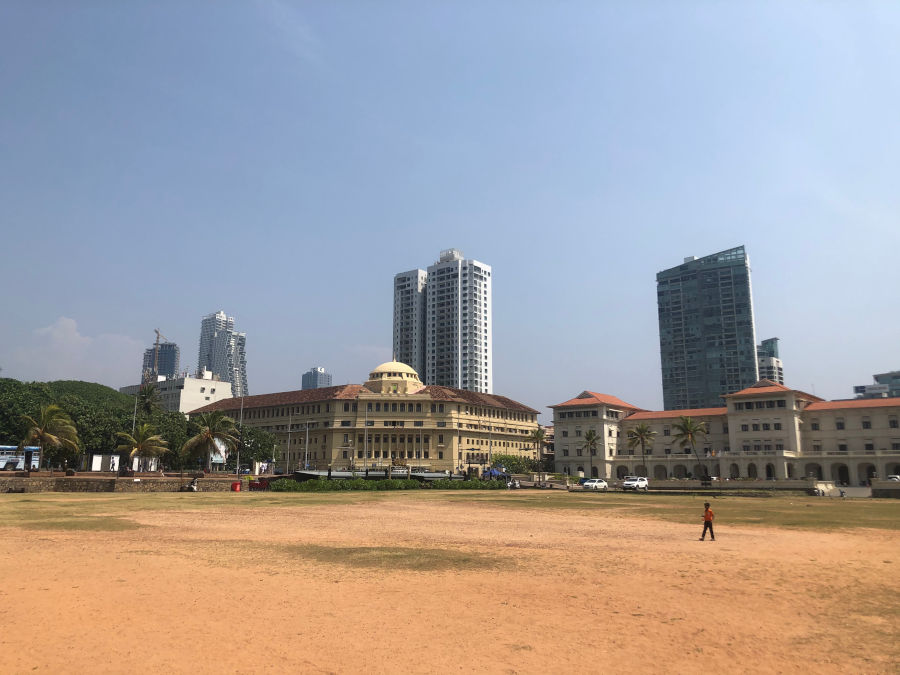 Looking south to Colombo city and the Galle Face Hotel and Colombo Law Courts. More hi-rise residential buildings. Two-bedroom apartments in some of these are now fetching a pre-completion US$300,000 for 900 sq feet.
Looking south to Colombo city and the Galle Face Hotel and Colombo Law Courts. More hi-rise residential buildings. Two-bedroom apartments in some of these are now fetching a pre-completion US$300,000 for 900 sq feet.
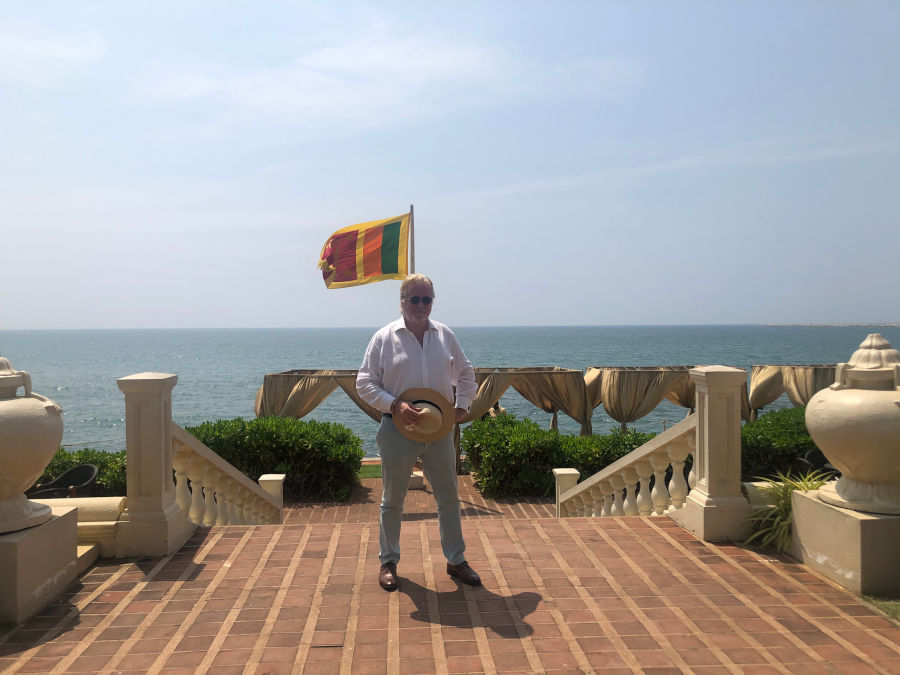 Chris Devonshire-Ellis, with the Palk Straits to India behind, at the Galle Face Hotel, Colombo, Sri Lanka.
Chris Devonshire-Ellis, with the Palk Straits to India behind, at the Galle Face Hotel, Colombo, Sri Lanka.
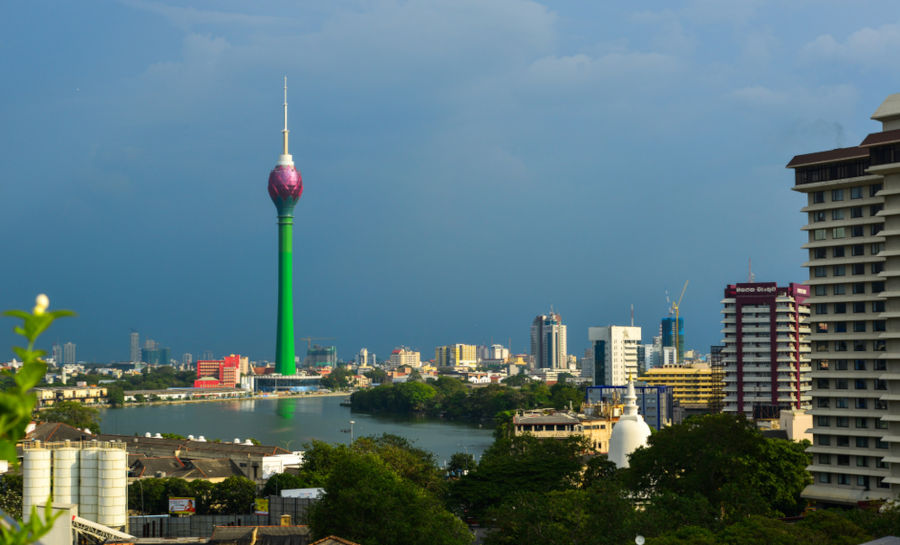 Colombo’s Lotus Tower viewed from Victoria Garden lake: Southeast Asia’s tallest tower at 350 meters. It features shopping malls, cinemas, the national post office telecommunications center, and a revolving restaurant and viewing platform at the top. Singapore’s tallest building is the Guoco Tower at 290 meters.
Colombo’s Lotus Tower viewed from Victoria Garden lake: Southeast Asia’s tallest tower at 350 meters. It features shopping malls, cinemas, the national post office telecommunications center, and a revolving restaurant and viewing platform at the top. Singapore’s tallest building is the Guoco Tower at 290 meters.
Redeveloping Sri Lanka
Sri Lanka is being developed to act as an accessory in part to Singapore, the regional Southeast Asia financial and services capital. While Sri Lanka will not compete with Singapore in financial services, it will compete in back-office services, where research and related non=front office activities can be carried out. The country is also Buddhist, and this has some advantages for Singapore, where nearby Malaysia and Indonesia in comparison are Muslim countries, occasionally with separate agendas and cultural issues.
Sri Lanka also has an advantage in its size – and geographic position. Singapore occupies just 728 sq. km, Sri Lanka 65,610 sq. km – nearly eighty times the size. That means possibilities for manufacturing in Sri Lanka, and much of this is being earmarked for the south-east coast, in the Hambantota region, where the new airport, port, and rail connectivity is. The area is in the dry zone, which means less humidity, and relatively flat, making construction easy. Those attributes have already led to savvy investors taking advantage of Hambantota’s Special Economic Zone, which being new is offering some significant tax and investment incentives.
These include a specific Government FDI policy to attract investment into the automotive sector – Sri Lanka is unlikely to ever manufacture vehicles – but Hambantota has secured a recent US$300 million investment in tire manufacturing (rubber is a natural product in Sri Lanka) and has plans to develop lithium-ion batteries based on another locally sourced product, Graphene. Sri Lankan made, export-oriented auto components are becoming a reality, with the factories able to be sited well away from the famed tourist areas.
Sri Lanka also has a young, tech-savvy population, and there have been plans for numerous Asian Universities to set up a joint campus in Colombo – although the development of education distance learning, for now, has put those plans on hold. English however is widely spoken and certainly at the business level of local talent. The majority of executive levels Sri Lankan’s were educated overseas and are fully internationalized.
With Colombo developing as a South-East Asian Service Centre and possessing an airport, port, and CBD that looks West, and the Hambantota airport, port, and SEZ’s looking East and South, Singapore will have competition. Sri Lanka, with its lower wages, larger geographic landmass, famous beaches, and an up-and-coming economy is shortly to become one of the Asian Leopards – smaller than the Tiger economies but attractive, adaptable, and alluring, nonetheless.
Related Reading
- China Continues Sri Lankan Belt & Road Development With Central Expressway
- India Competes with China over Belt and Road Ports in Sri Lanka
Dezan Shira & Associates handle foreign investment into Asia and have done since 1992. With offices throughout China, India, and ASEAN we also have partner firms across the region including Sri Lanka, where the company Chairman is also based. For assistance, please contact us at asia@dezshira.com or visit www.dezshira.com


